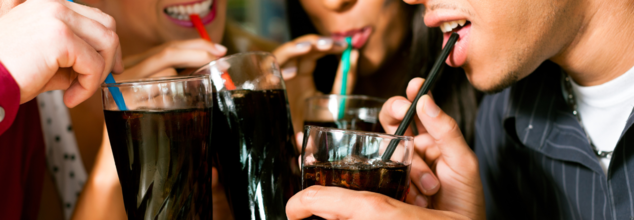- Health Conditions A-Z
- Health & Wellness
- Nutrition
- Fitness
- Health News
- Ayurveda
- Videos
- Medicine A-Z
- Parenting
- Web Stories
New Age Neurocosmetics Are Improving Brain And Skin Connection But There Is A Catch

Neurocosmetics (Credit: Canva)
Skincare trends may come and go, but neurocosmetics are shaping up to be a lasting innovation. These science-driven products are revolutionizing skincare by creating a deeper connection between the brain and skin, delivering results that truly impress. From lip balms with peptides to serums with Retinol, these new-age products have become everyone's favourite in no time.
Your skin is more than a barrier—it is a sophisticated communication channel with the brain. Over 1,000 neuroreceptors in your skin work as messengers to the brain, signalling damage caused by external factors. Neurocosmetics intercept these signals, soothing and stimulating your skin to restore balance and calm. For instance, when exposed to pollution or stress, neurocosmetics activate mechanisms that counteract these effects, leaving your skin rejuvenated and serene.
What Are The Star Ingredients Used In Neurocosmetics?
Small or big, all skincare cosmetics are using these ingredients in their new-age products:
Peptides: Protein chains that repair skin, reduce inflammation and stimulate collagen for strength, firmness, and elasticity.
Botanicals: Natural ingredients like chamomile, lavender, and green tea soothe both skin and mood, promoting holistic wellness.
Probiotics: Balance the skin’s microbiome, alleviating issues such as acne and dermatitis.
Adaptogens: Stress-relieving powerhouses like ashwagandha and ginseng help the skin adapt to external stressors and restore balance.
Neurocosmetics Target Stress
Stress is a significant culprit behind various skin issues, including acne, psoriasis, and eczema. Neurocosmetics act like therapy for your skin, facilitating better communication between your brain and epidermis to promote healing, balance, and radiance.
A study published in Brain, Behavior, and Immunity in February 2024 stated that stress can affect the skin barrier function, impair wound healing, and promote the release of pro-inflammatory cytokines, thereby exacerbating existing skin diseases such as psoriasis, atopic dermatitis, acne, and urticaria. Moreover, brain imaging studies have revealed that limbic regions of the brain, such as the amygdala and hippocampus, show altered activities in response to psychological stress and may be implicated in stress-induced skin disease exacerbations. Stress also modulates activity in the sensory cortices associated with pain perception, which may amplify skin discomfort.
One standout benefit is their potential to reduce signs of ageing. By working on a cellular level, neurocosmetics boost cell longevity, fight inflammation, and enhance skin elasticity, keeping your complexion youthful and glowing.
Do They Really Work?
Though backed by science, neurocosmetics should be approached with caution. As with any skincare product, marketing hype can overshadow genuine benefits. Thus, is genuinely essential to research thoroughly, analyze ingredients, and consult a trusted dermatologist before adding these products to your regimen. Not all neurocosmetic products are created equal, and the term itself doesn’t guarantee quality. In addition, one's skin type and allergies also play a significant part in picking a product. It is advised to people to not be lured by the flashy claims and marketing strategies to ensure the product is both effective and suitable for their skin.Does Venting Really Help? Studies May Suggest Otherwise

Credits: Canva
Venting when angry may feel cathartic, but a meta-analysis suggests it might do more harm than good. According to a 2024 study published in Clinical Psychology Review, researchers at Ohio State University analyzed data from 154 studies involving over 10,000 participants and found that venting rarely helps and may, in fact, intensify anger.
“I think it’s really important to bust the myth that if you’re angry you should blow off steam – get it off your chest,” said senior author Brad Bushman, a communication scientist, in a statement. “Venting anger might sound like a good idea, but there’s not a shred of scientific evidence to support catharsis theory.”
To dig deeper, we spoke to Dr Sumalatha Vasudeva, psychologist at Gleneagles BGS Hospital, Kengeri in
Bengaluru, India. She explains, "There’s a strong belief that venting—shouting, hitting objects, or going to a rage room—helps release anger. This idea, often referred to as catharsis, is deeply rooted in early psychological theory and pop culture."
However, she further adds, "While it feels intuitive, aggressive venting can sometimes amplify anger by increasing physiological arousal and reinforcing aggressive neural patterns. You're addressing the response, not the root cause, which makes the behavior more likely to repeat."
Why Venting Doesn’t Work
The popular “pressure cooker” analogy, which compares venting to releasing steam to prevent emotional explosion, may be outdated. According to the study, activities that increase physical arousal—such as yelling, punching pillows, or even exercising—can heighten physiological responses, which may worsen anger rather than reduce it.
"Not all expressions lead to healing. Aggressive venting provides temporary relief but not true emotional release. Real healing involves working with the root cause of the anger—not just letting off steam," explains Dr Vasudeva. She also notes that true healing often comes from somatic awareness, breathwork, mindfulness, or energetic practices like Reiki. These help us soothe, witness, and integrate anger instead of acting it out.
“To reduce anger, it is better to engage in activities that decrease arousal levels,” Bushman explained. “Despite what popular wisdom may suggest, even going for a run is not an effective strategy because it increases arousal levels and ends up being counterproductive.”
The Dangers of Rumination
While expressing emotions is important, the line between healthy reflection and toxic rumination is thin. The study found that what often passes as "venting" becomes repetitive mental replaying of upsetting events, which only deepens the emotional distress. However, it is true that we do feel better after we went, why is that? To this, Dr Vasudeva has an answer, "People often feel better after venting because they believe their emotional needs have been met. But this sense of control is temporary—a surface-level discharge, not a deep emotional resolution."
The idea for the review was also sparked by the growing popularity of rage rooms—commercial spaces where people pay to smash objects as a form of release.
First author Sophie Kjærvik, a communication scientist at Virginia Commonwealth University, said, “I wanted to debunk the whole theory of expressing anger as a way of coping with it. We wanted to show that reducing arousal, and actually the physiological aspect of it, is really important.”
What Works Instead: Calm the Body, Calm the Mind
The research draws from the Schachter-Singer two-factor theory, which explains emotions as a mix of physiological arousal and cognitive interpretation. While cognitive-behavioral therapy (CBT) is often used to address the thinking side of anger, this study emphasized the importance of physical calm as well.
The most effective anger-reducing strategies included:
- Slow-flow yoga
- Diaphragmatic breathing
- Mindfulness meditation
- Progressive muscle relaxation
- Taking a timeout
“It was really interesting to see that progressive muscle relaxation and just relaxation in general might be as effective as approaches such as mindfulness and meditation,” said Kjærvik.
Even yoga, which can be moderately arousing, proved useful due to its focus on breath control and bodily awareness. Fun-based physical activity like ball sports, which involve play rather than intense exertion, also helped by lowering physiological arousal.
Dr Vasudeva also seconds this and says, "Mindfulness and breathwork activate the parasympathetic nervous system—the 'rest and digest' state—which promotes emotional balance, clarity, and the ability to respond constructively."
Reinforcing Aggression
So why do people feel better after venting? According to Bushman, it’s likely due to a false sense of emotional relief. “Any good feeling we get from venting actually reinforces aggression,” he said. The short-term high may trick people into believing venting works, even as their anger worsens beneath the surface.
The researchers emphasized that effective anger management doesn't require therapy sessions or expensive tools. “You don’t need to necessarily book an appointment with a cognitive behavioral therapist to deal with anger,” Kjærvik said. “You can download an app for free on your phone, or you can find a YouTube video if you need guidance.”
Heart Attack Rates Have Decreased, But Number Of Chronic Cardiac Diseases Have Risen: Study

(Credit-Canva)
Heart health or cardiovascular diseases are the leading causes of mortality in the world. In 2019, 17.9 million people died due to cardiovascular diseases with 85% of these deaths attributed to heart attacks and strokes. There are many types of cardiovascular diseases, many of which are chronic diseases. While the numbers of death due to heart attacks may seem high, new study published in the Journal of the American Heart Association shows these numbers have actually decreased. However, while these numbers went down, chronic diseases have seen a rise.
How Have Heart Disease Deaths Changed Over Time?
To understand how heart disease deaths have changed, researchers looked at national data from 1970 to 2022, focusing on adults aged 25 and older. Heart disease covers many different heart problems. Even though heart disease remains the leading cause of death in the U.S. (responsible for 24% of all deaths in 2022), the total number of deaths from heart disease actually went down by 66%.
Deaths from ischemic heart disease (the most common type, caused by blocked arteries) dropped significantly, from 91% to 53% of all heart disease deaths. Deaths from heart attacks (often the first sign of ischemic heart disease) fell by a huge 89%, making up less than a third of all heart disease deaths in 2022. But the study also found a big increase in other heart conditions, which now account for nearly half of all heart disease deaths. The three conditions that rose the most were:
Hypertensive heart disease
Deaths from this condition, caused by long-term high blood pressure, went up by 106%. It now makes up 13% of all heart-related deaths.
Heart failure
Deaths from this condition, where the heart can't pump enough blood over time, rose by 146%. It now accounts for 12% of all heart-related deaths.
Arrhythmias (irregular heartbeats)
Deaths from arrhythmias, where the heart beats too fast, too slow, or unevenly, soared by 450%. They now make up 4% of all heart-related deaths.
One of the study's authors mentioned that while these trends are "quite clear," some changes in how deaths were categorized might have caused small inaccuracies. Also, the study didn't fully consider how other health problems or things like race might have affected the results. For example, some heart problems might have been underestimated if they stemmed from ischemic heart disease.
Despite these minor points, experts agree the study provides "valuable insights" and is a "well-designed, large-scale study" using over 50 years of data.
Why the Shift to Chronic Heart Conditions?
Experts believe the drop in some heart disease deaths is due to better ways to diagnose problems and improved care. This includes new medicines and procedures that help restore blood flow to the heart.
However, many people who survive a heart attack go on to develop other heart conditions like heart failure or arrhythmias. When you combine this with a growing older population and rising rates of obesity, diabetes, and high blood pressure, it creates "the perfect storm for chronic cardiac disease." This new "wave of chronic heart disease deaths" mainly affects older adults and those with several health issues.
How to Protect Your Heart?
To keep your heart healthy, focus on a few key areas: know your numbers by tracking your blood pressure, cholesterol, blood sugar, and weight, as early detection of issues is vital. Stay active with at least 150 minutes of moderate exercise weekly; even walking can significantly improve heart function. Eat a nutritious diet rich in vegetables, fruits, whole grains, lean proteins, and healthy fats, following heart-healthy guidelines. Avoid smoking or seek help to quit, as it's a primary cause of heart disease. Finally, manage stress and get enough sleep, as these often-overlooked factors are crucial for reducing your heart risk.
Drinking Sugary Drinks Is Worse Than Eating Sugar - How You Consume It Matters More Than How Much

(Credit-Canva)
For many health-conscious people, sugar is the biggest health mistake they can make. Having earned a bad reputation, many people avoid sugary foods and opt for sweet fruit drinks instead. However, these juices and sugary drinks may be worse for your health than sweet desserts are. New research suggests that how you get your sugar might be just as important as how much you have.
Liquid vs. Solid Sugar
A new study published in the journal Advances in Nutrition, indicates that drinking sugary beverages like soda may increase your risk of type 2 diabetes more than eating sugary foods such as cookies and cakes.
Experts say this research is important because it shows the way sugar is consumed really matters. Instead of just saying "cut all sugar," we now have strong proof that where the sugar comes from, its form, and what it's eaten with are key to your health risk.
Surprising Findings About Sugar
The study found that at how different types of sugar affect health, researchers reviewed the habits of over 500,000 people. Their main finding was surprising: sugar from solid foods wasn't linked to a higher risk of type 2 diabetes, but sugar from drinks was.
Specifically, for every extra 12-ounce sugary drink you had daily, your risk of developing type 2 diabetes went up by 25%. Even fruit juice had an effect, with an extra 8-ounce serving raising the risk by 5%.
Interestingly, sugar from food not only didn't connect to diabetes risk, but in some cases, it seemed to offer some protection. Having a small amount of table sugar or total sugar (including natural sugar) daily was actually linked to a lower risk of type 2 diabetes.
These findings together show that "not all sugars are the same."
It's important to remember that this study only shows a connection between sugary drinks and type 2 diabetes, not that they directly cause it. While most studies considered things like body weight and smoking, other lifestyle habits could still play a role. For example, people who drink a lot of these beverages might also be less active, which can affect diabetes risk. Still, experts say the study is very thorough.
Why Liquid Sugar Might Be Worse
Sugary drinks might be more harmful because they don't have the fiber, protein, or fat that typically slow down digestion in solid foods.
This means liquid sugar gets into your bloodstream very quickly. This causes a sudden jump in blood sugar and insulin levels, and your brain doesn't get the signal that you're full. This fast intake can also make it hard for your liver to process the sugar, especially the fructose part.
In large amounts, fructose turns into fat in your liver. This buildup of fat is linked to metabolic problems that lead to type 2 diabetes. Other things in sugary drinks, like chemical additives and artificial colors, can also mess with your body's balance. Basically, sugary drinks like sports drinks, sodas, and cocktails are generally "bad for your health and should be had with care—or ideally, not at all."
How to Cut Back on Sugary Drinks
Sugary drinks can feel addictive. If you find yourself hooked, try to slowly reduce how much you drink, just like you would with alcohol or tobacco. It helps to plan ahead for when you usually crave a soda.
You can start by mixing plain sparkling water with an equal amount of fruit juice or soda. Then, week by week, slowly reduce the amount of the sugary drink until you're mostly just drinking sparkling water. If it helps, add a little lemon or lime juice for flavor. Make this your new habit.
© 2024 Bennett, Coleman & Company Limited

